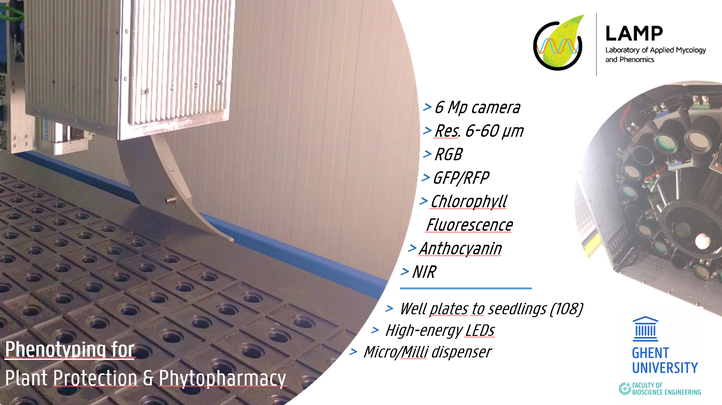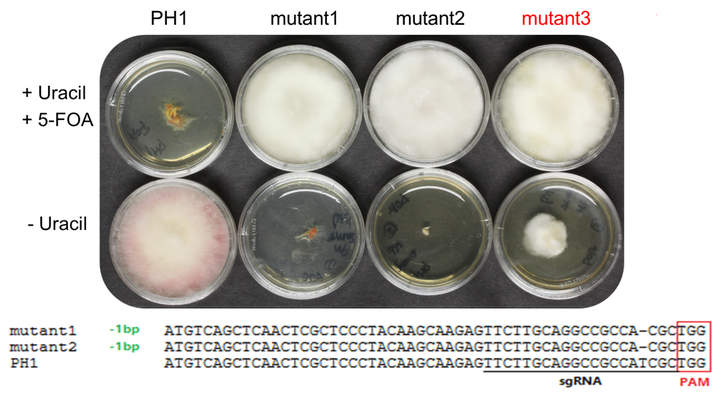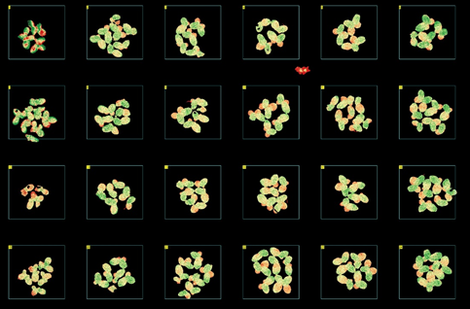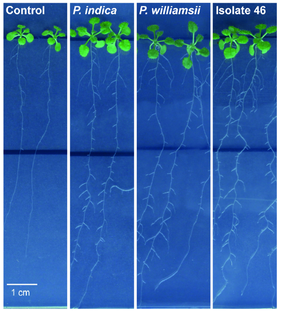Applied Mycology and Phenomics
Kris Audenaert
The mission of LAMP
Reducing crop losses due to (toxigenic) fungal plant pathogens is one of the major challenges in agriculture as these pathogens, driven by climate change, migrate from the equator towards the poles. New technologies will make it possible to develop agricultural practices in better harmony with the natural environment. The mission of the Laboratory of Applied Mycology and Phenomics (LAMP) is to significantly contribute to solving the above-described grand challenges by exploring new innovations to control fungal plant pathogens. We embedded our research in the following thematic areas in applied mycology:
1. Plant-growth promoting endophytic fungi for healthy crops, free of fungal phytopathogens
2. The use of green leaf volatiles (GLVs) and biogenic volatile compounds (BVOCs) as new agronomic tools in crop protection
3. Monitoring plant pathogenic fungal populations with focus on emerging problems in diverse crops comprising wheat, maize, allium sp., tomato, potato,…
4. Microbial degradation and detoxification of toxins produced by phytopathogens
5. New enzyme-based technologies against fungal phytopathogens
Technologies
(i) PathoViewer
PathoViewer is a plant phenotyping system, intended for high-resolution multispectral imaging in a highly controllable environment. The system is composed of 6Mp - 16 bit camera mounted on a Cartesian coordinate robot, and can be used to monitor the effect of biotic (e.g. fungal pathogens) and abiotic (e.g. drought) stress on large numbers of seedlings and small plants up to 15 cm. Due to the highly automated sensor-to-plant principle, the spread of a disease or the effect of a stressor can be traced throughout the plant in time. Additionally, PathoViewer allows phenotyping of small plants such as Lemna minor or plant parts grown in multi-well plates with a resolution up to 10 µm.
Using a combination of RGB, Chlorophyll fluorescence, anthocyanin, NIR and GFP/RFP imaging, PathoViewer can visualize the impact of biotic and abiotic stress in multiple ways. Moreover, researchers with expertise on image processing within the LAMP research unit (and closely collaborating units) can be consulted to compute scientifically relevant measures from these images, thus reaching beyond the mere visualization of phenomena.
PathoViewer is installed within a highly controllable environment. Controllable environmental parameters include temperature, relative humidity and spectral profile of irradiated light (up to 1000 µmol m-2 s-1). Moreover, as plants are watered individually using an automated dispensing system, multiple water regimes can be applied simultaneously.
(ii) Fungal genome-editing
At LAMP, we additionally combine phenomics with genome-editing techniques allowing us to modify or tag plant pathogens and beneficial microbes permitting us to uncover plant-microbe interactions with a hitherto unseen resolution. Both homologous recombination based technologies and more advanced Crispr-based transformation platforms are operational in several fungal genera such as Fusarium, Aspergillus, Zymoseptoria,…
(iii) Bio-assays and bio-reporter crops
PathoViewer enables high-throughput screenings for new bioactive molecules or new agrochemicals with herbicidal or biostimulant effects. To using bio-reporter organisms such as Saccharomyces cerevisiae, (with human oestrogen receptor) Lemna minor and Arabidopsis thaliana.
The UGent Network
LAMP is involved in several large-scale collaborations on biostimulants and toxigenic fungi. MYTOX is a consortium which was established in 2007 and is headed by Prof. Sarah De Saeger (Faculty of Pharmaceutical Sciences). MYTOX deals with mycotoxin research based on four main pillars: (i) identification, characterization and transcriptional engineering of toxigenic fungi; (ii) prevention and control of toxigenic fungi in the food and feed chain; (iii) targeted and non-targeted mycotoxin analysis and (iv) health impact upon toxins exposure. This well-structured MYTOX group has been very successful in fund raising (>€6 million for more than 20 collaborative projects) and publishing more than 130 collaborative high-quality papers. In 2017, this consortium was extended to MYTOX-SOUTH, an ITN (international thematic network) investigating the mycotoxin issue in the tropics.
CROPFIT is an IOF validation consortium founded to develop, screen and describe new compounds and organisms with growth-promoting characteristics or pest/disease control activities. The consortium exists of 35 research groups. LAMP is actively involved and embedded in this consortium, focusing on beneficial endophytic fungi and bacteria in de rhizo- and phyllosphere. Maaike Perneel is the IOF CropFit business developer and facilitates the interaction between UGent and industrial business partners. (https://www.ugent.be/cropfit/en). This resulted in many bilateral projects with industry.



